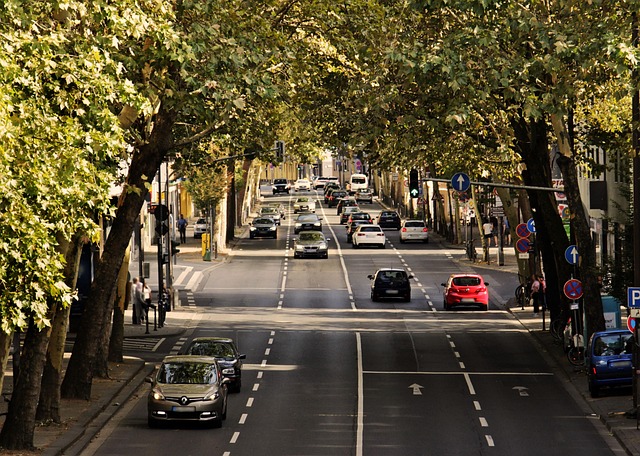Modern vehicles with advanced communication systems, particularly Vehicle-to-Vehicle (V2V) tech, are transforming urban driving. V2V enables real-time data sharing for enhanced traffic awareness and safety, reducing accidents and congestion. Integrating these systems into upgraded urban infrastructure creates a connected network prioritizing efficiency and pedestrian safety, ensuring protected vulnerable road users in bustling environments. This technology, alongside ITS and smart grid upgrades, drives safer, smarter, greener city mobility.
Experience the thrill of vibrant urban driving with instant communications! In today’s digital age, real-time navigation and connected drives are transforming city streets. This article explores how vehicle-to-vehicle (V2V) communication enhances safety, efficiency, and convenience in bustling urban landscapes. Discover the benefits of seamless V2V integration when selecting your next urban vehicle, and navigate with confidence through the hustle and bustle of modern metropolises.
- Selecting Vehicles for Seamless Communication
- Benefits of Real-Time Urban Navigation
- Enhancing Safety through Connected Drives
Selecting Vehicles for Seamless Communication

When it comes to vibrant urban driving with instant communications, selecting the right vehicles is paramount. Modern cars are increasingly equipped with advanced communication systems that enable Vehicle-to-Vehicle (V2V) communication, fostering safer and more seamless interactions on the road. This technology allows for real-time data sharing among vehicles, enhancing collective awareness of traffic conditions, potential hazards, and pedestrian safety measures.
Additionally, integrating these mobility systems into urban transportation infrastructure upgrades is crucial. Such upgrades not only improve overall efficiency but also create a more connected network where vehicles can communicate directly, reducing accidents and congestion. Pedestrian safety measures are another key aspect to consider, ensuring that the chosen vehicles have features designed to protect vulnerable road users in a bustling urban environment.
Benefits of Real-Time Urban Navigation

In today’s fast-paced urban environment, efficient navigation is key to saving time and reducing stress for drivers. Real-time urban navigation systems, enhanced by Vehicle-to-Vehicle (V2V) communication, offer numerous benefits that transform driving experiences. By facilitating instant exchanges of data between vehicles, V2V technology provides up-to-the-minute information about traffic conditions, road closures, accidents, and even pedestrian safety measures. This real-time communication enables drivers to make informed decisions, adapt their routes accordingly, and ultimately enjoy smoother commutes through optimized urban mobility solutions.
Moreover, integration with intelligent transportation systems (ITS) and smart grid technologies contributes to significant transportation infrastructure upgrades. These advanced systems not only improve traffic flow but also promote environmental sustainability by reducing congestion and optimizing energy usage. As a result, cities can develop more efficient urban landscapes, where V2V communication plays a pivotal role in enhancing overall transportation infrastructure and fostering safer, smarter, and greener urban mobility.
Enhancing Safety through Connected Drives

In today’s digital era, vibrant urban driving is not just about navigating bustling streets; it’s about enhancing safety through connected drives. Vehicle-to-Vehicle (V2V) communication technology plays a pivotal role in achieving this goal. By enabling direct vehicle-to-vehicle and vehicle-to-infrastructure exchanges, V2V systems can significantly reduce the number of accidents caused by human error. These smart cities applications leverage real-time data sharing to warn drivers about potential hazards, such as sudden stops or lane departures, allowing for quicker reaction times and more effective collision avoidance.
Public-private partnerships in transport urban planning and cost-effective V2V solutions are pivotal to deploying these advanced safety features on a larger scale. Such collaborations ensure that the development of V2V infrastructure aligns with urban planning goals while keeping implementation costs manageable. This holistic approach not only enhances road safety but also fosters a more integrated and efficient transportation system, transforming urban mobility into a seamless and secure experience for all folks navigating the metropolis.
Vibrant urban driving can be transformed through instant comms, enabling safer and more efficient navigation. By selecting vehicles equipped with advanced Vehicle-to-Vehicle (V2V) communication technology, city dwellers can benefit from real-time traffic updates and enhanced safety features. This connected driving experience not only navigates the bustling urban landscape but also promises a future where every journey is smoother and smarter.
